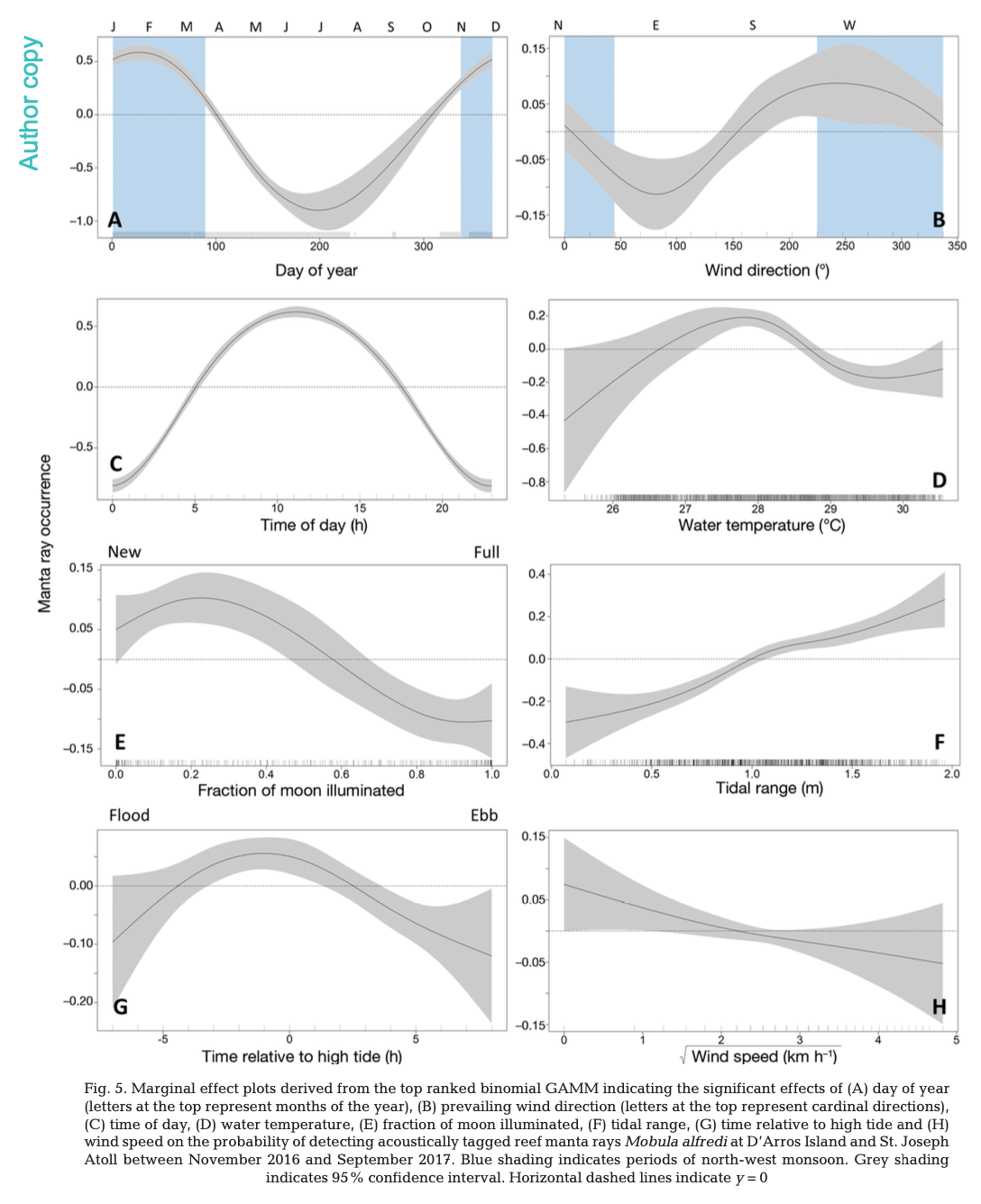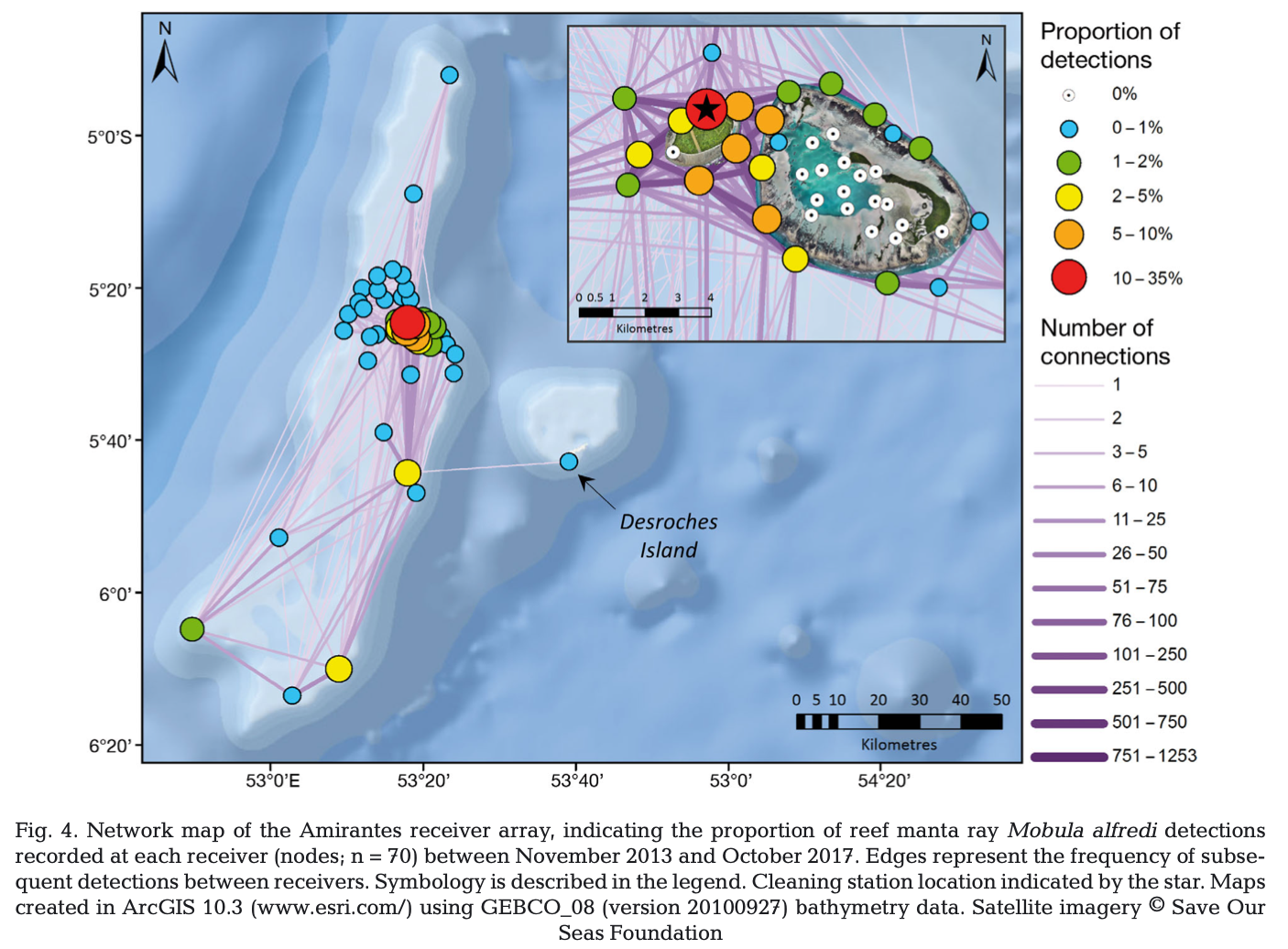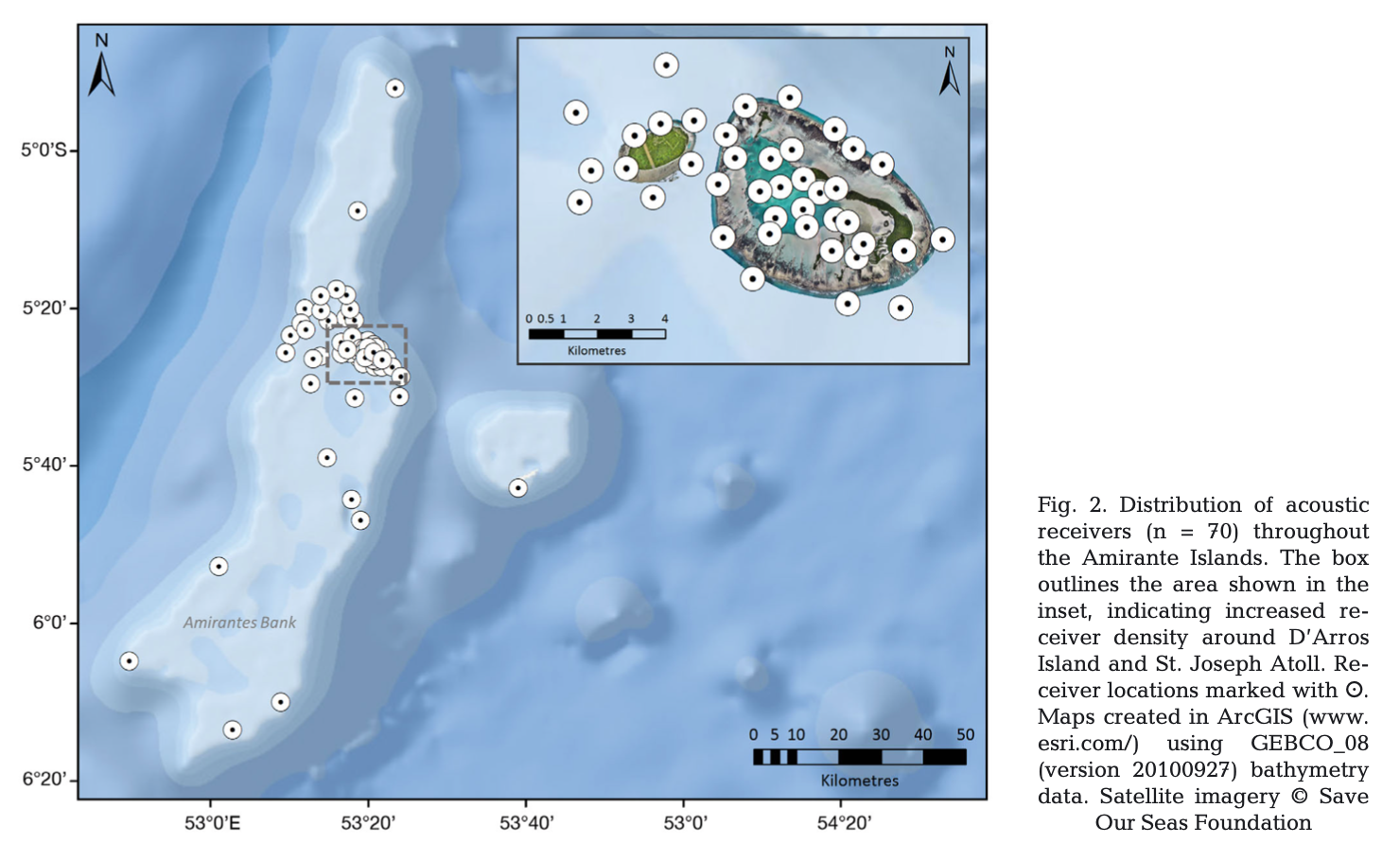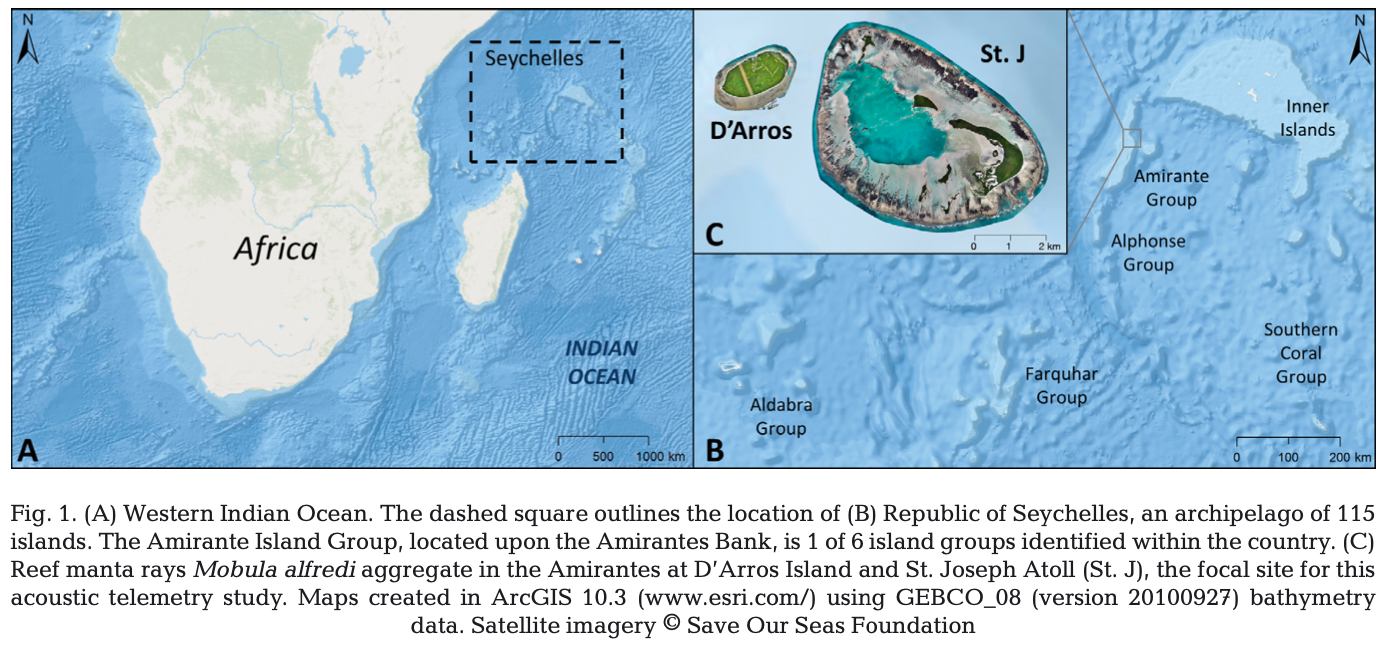Movement and residency patterns of reef manta rays Mobula alfredi in the Amirante Islands, Seychelles
July 2019
Lauren R. Peel, Guy M. W. Stevens, Ryan Daly, Clare A. Keating Daly, James S. E. Lea, Christopher R. Clarke, Shaun P. Collin & Mark G. Meekan
Keywords: Acoustic Telemetry • Residency • Site Fidelity • Environmental Drivers • Elasmobranch • Conservation




Summary: Researchers used acoustic telemetry to monitor the movement ecology of reef manta rays in the Amirante Islands in order to identify key aggregation areas and protect the species. They found that the rays were detected year-round, with a peak in November to April. They were most likely to be detected during the day, at low wind speeds, and when water temperatures were approximately 28°C. Larger individuals travelled greater distances per day than smaller individuals and juveniles. The majority of detections were recorded within 2.5 km of the shoreline of D’Arros Island and the neighbouring St. Joseph Atoll, highlighting the importance of these sites and supporting the proposed development of a marine protected area.
Abstract
“Reef manta rays Mobula alfredi are large filter-feeding elasmobranchs that are undergoing substantial population declines on a global scale. In order to effectively conserve and manage populations, it is crucial that the drivers of their occurrence are defined and that key aggregation areas for this species are identified and protected. Here, we used passive acoustic telemetry to monitor and assess the movement ecology of M. alfredi in the remote Amirante Islands, Republic of Seychelles. Acoustic transmitters were externally deployed on M. alfredi at D’Arros Island (n = 42) and movement data retrieved from an array of 70 acoustic receivers deployed throughout the Amirantes between November 2013 and October 2017. Individuals were detected year-round, with a peak in detections occurring between November and April coinciding with the arrival and departure of the north-west monsoon. Individuals were most likely to be detected within the array during the day, at low wind speeds, and when water temperatures were approximately 28°C. Additionally, individuals were more likely to be detected during a new moon, when the tidal range was at its highest, and on the slack of high tide. M. alfredi travelled widely within the Amirantes, with larger individuals travelling greater distances per day than smaller individuals and juveniles. The majority of detections (89%) were recorded within 2.5 km of the shoreline of D’Arros Island and the neighbouring St. Joseph Atoll, highlighting the importance of these sites to M. alfredi in the Amirante Islands, and supporting the proposed development of a marine protected area at this location.”
Author Affiliations
School of Biological Sciences, The Oceans Institute and The Oceans Graduate School, The University of Western Australia
The Australian Institute of Marine Science, Crawley
The Manta Trust
Save Our Seas Foundation - D’Arros Research Centre (SOSF-DRC)
South African Institute for Aquatic Biodiversity (SAIAB)
Department of Zoology, University of Cambridge
Marine Research Facility, Saudi Arabia
School of Life Sciences, La Trobe University
Funded by
Save Our Seas Foundation
The Manta Trust
University of Western Australia
Australian Institute of Marine Science
SOSF-D’Arros Research Centre
Island Conservation Society
Alphonse Foundation
Islands Development Company
Blue Safari
Alphonse Island Lodge
UWA Postgraduate Student’s Association

